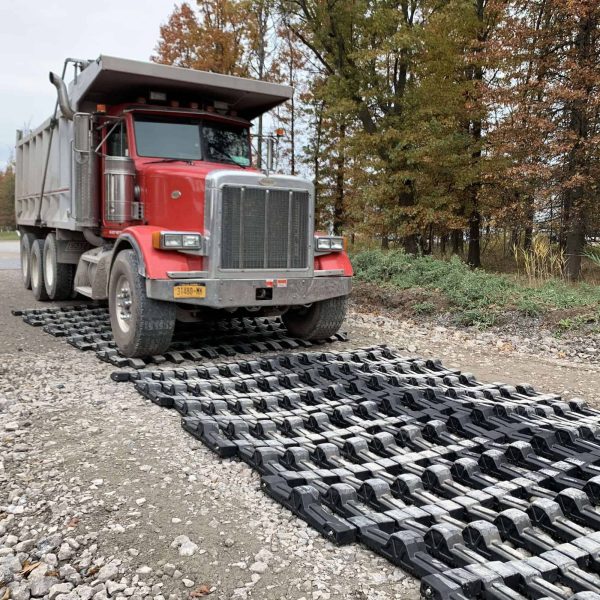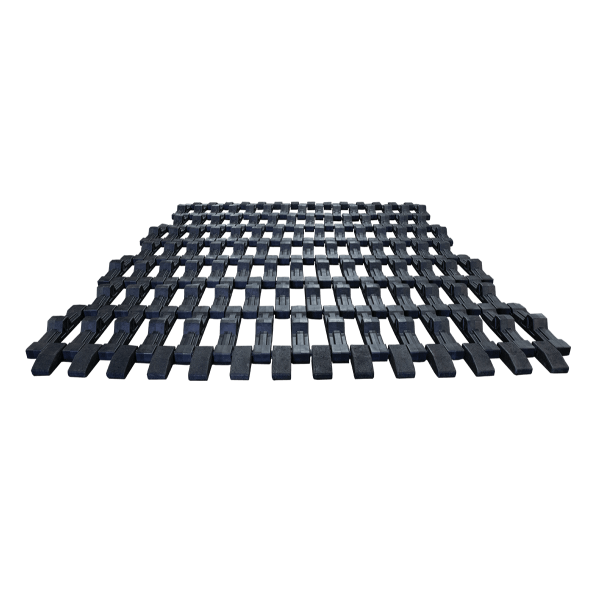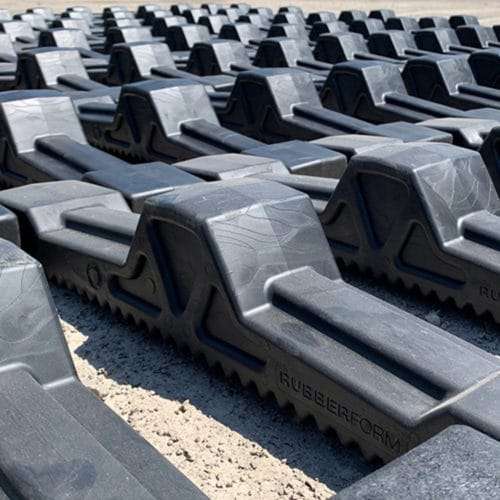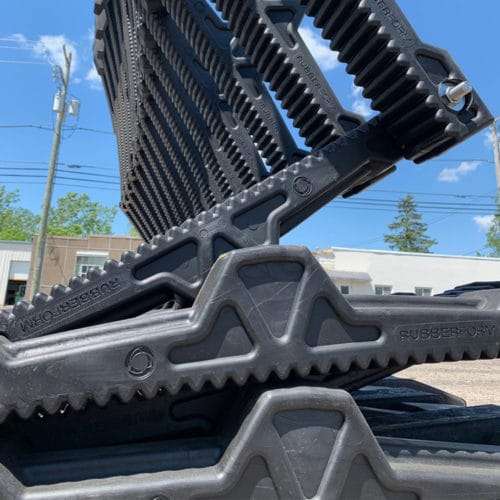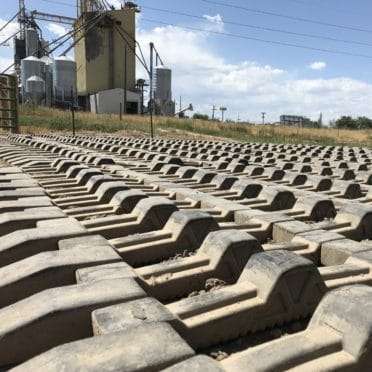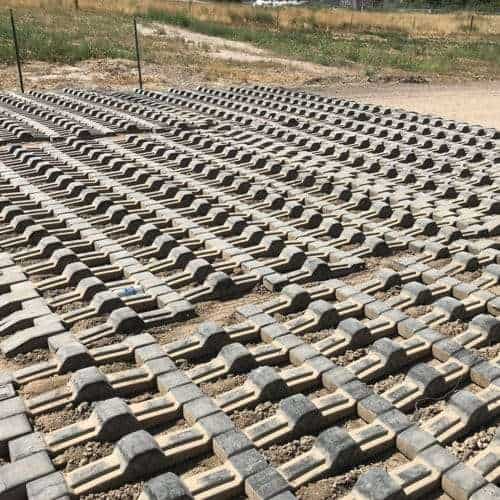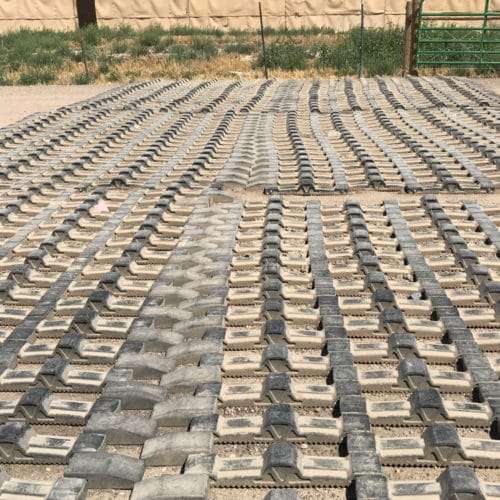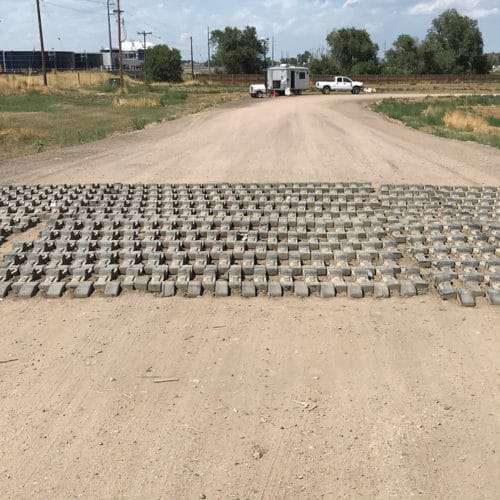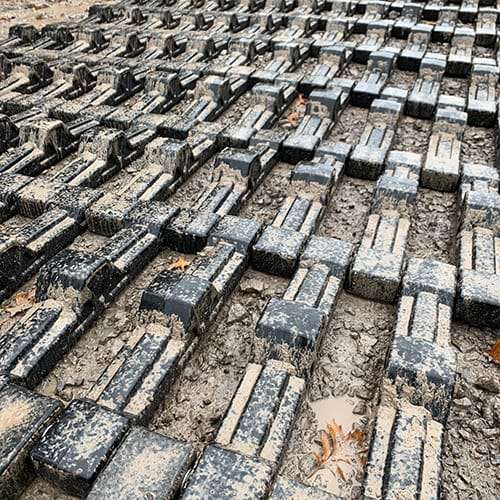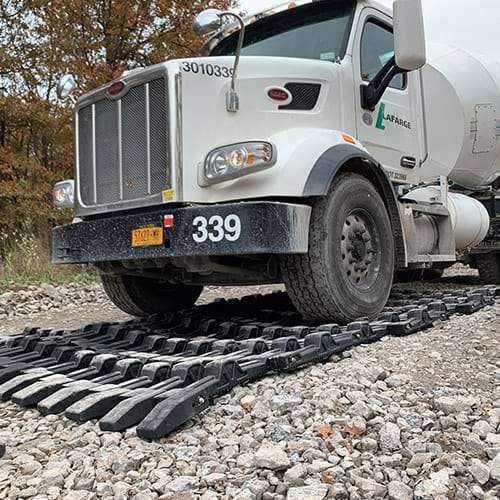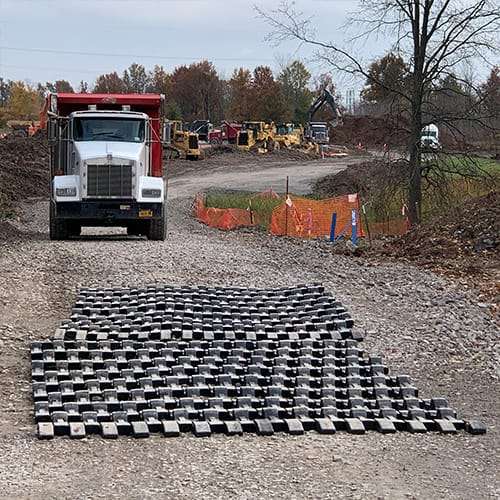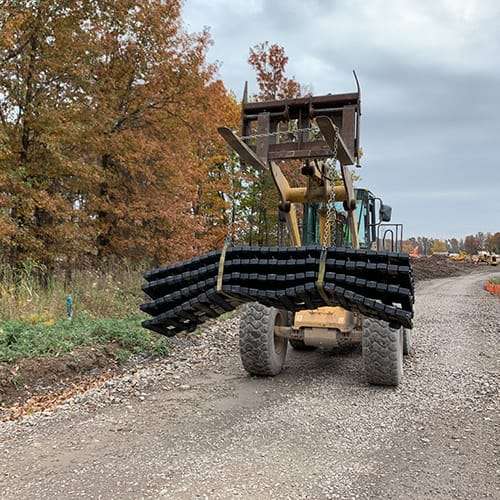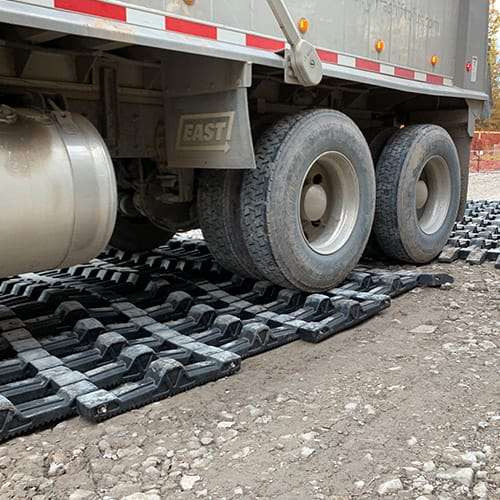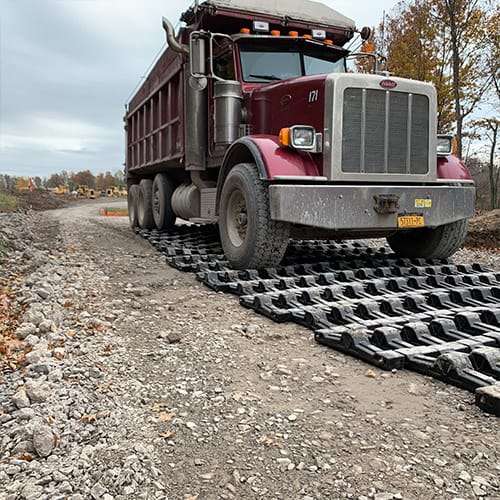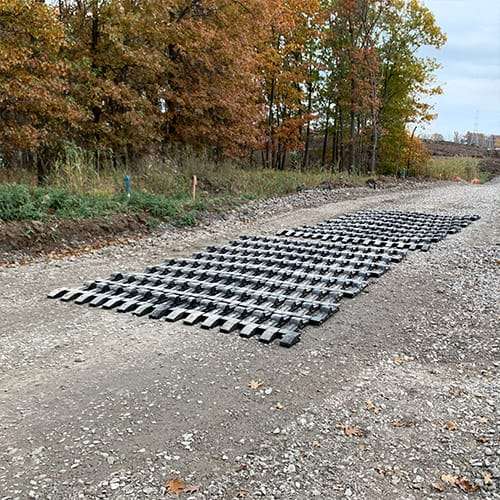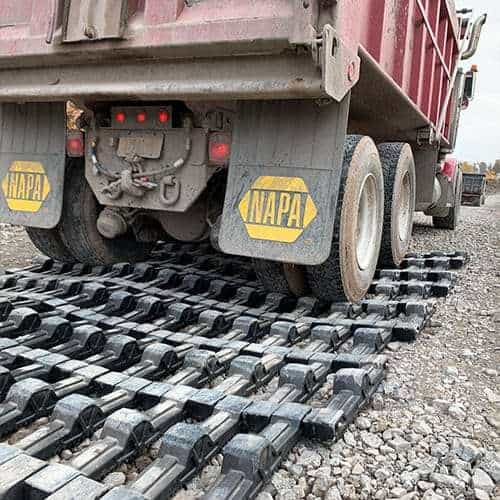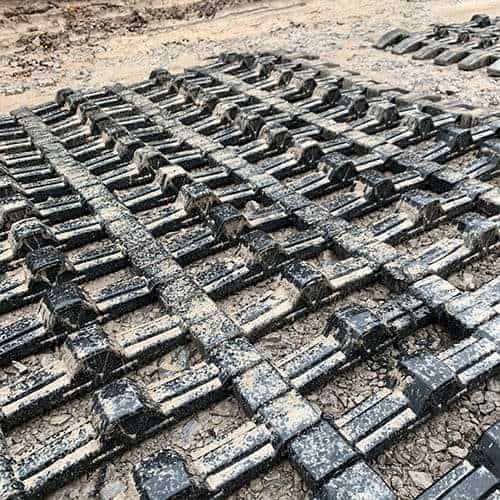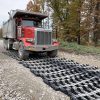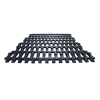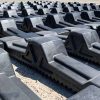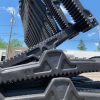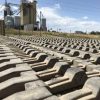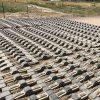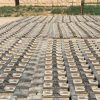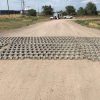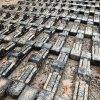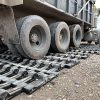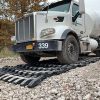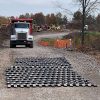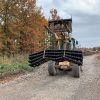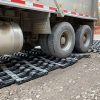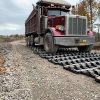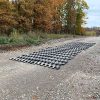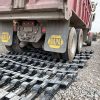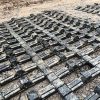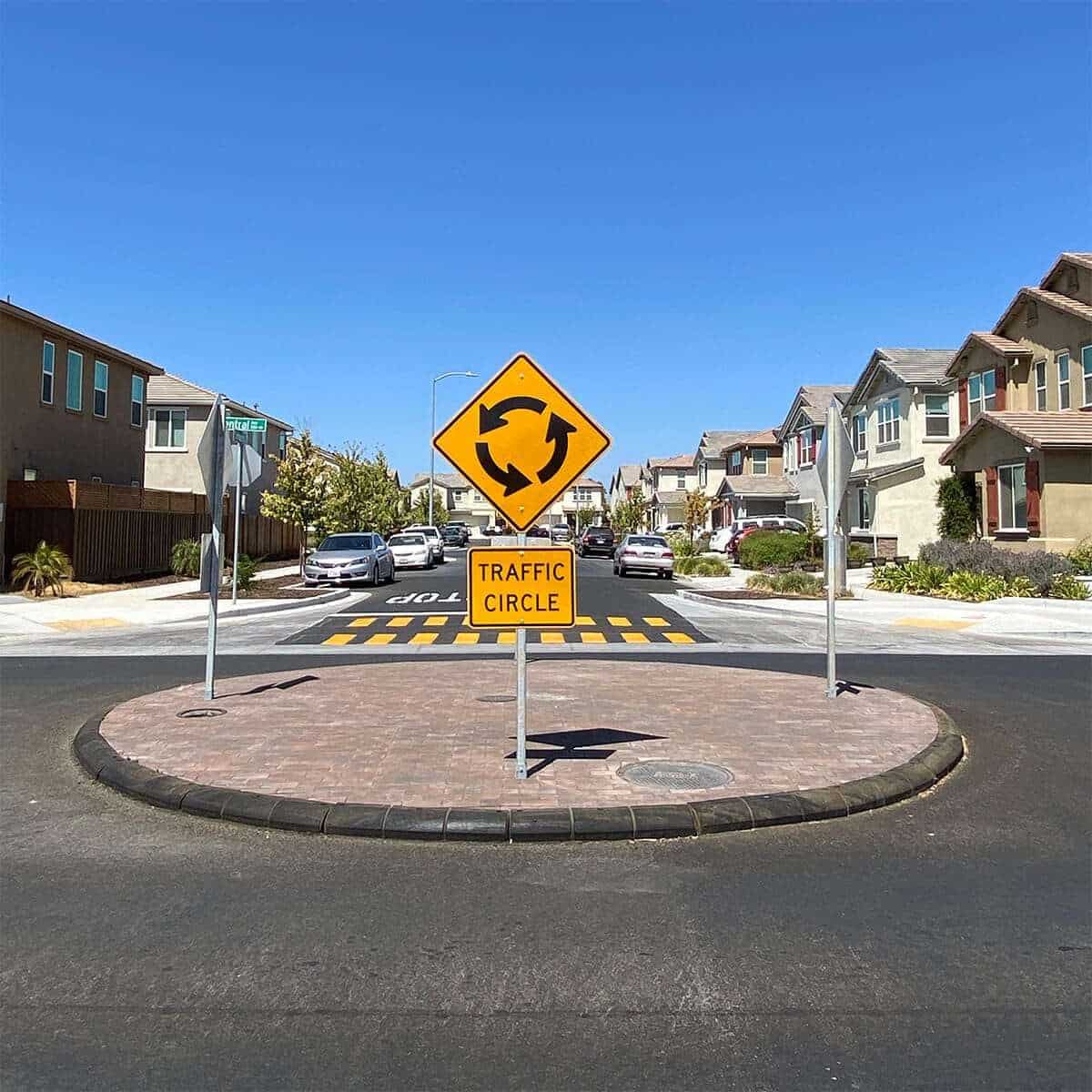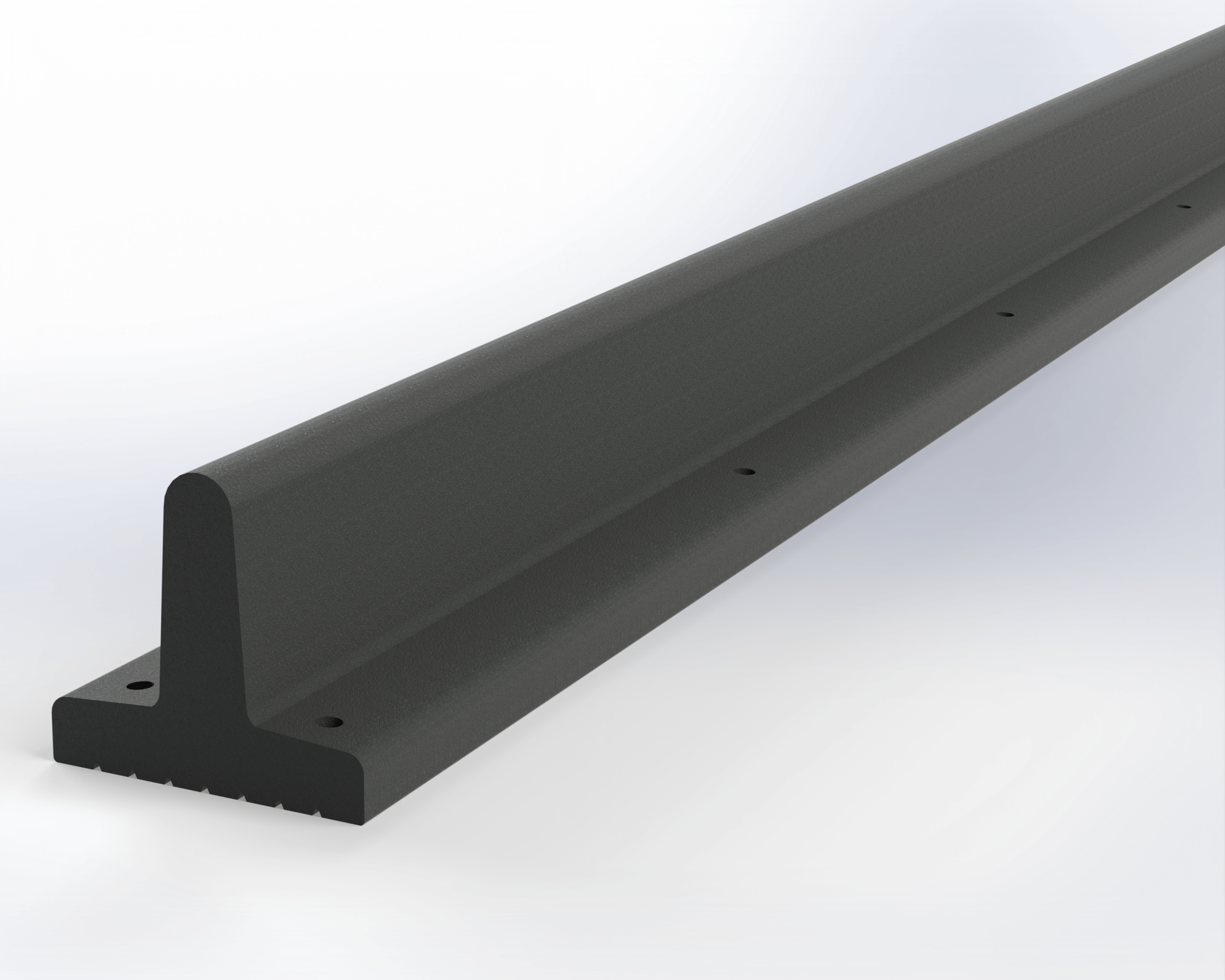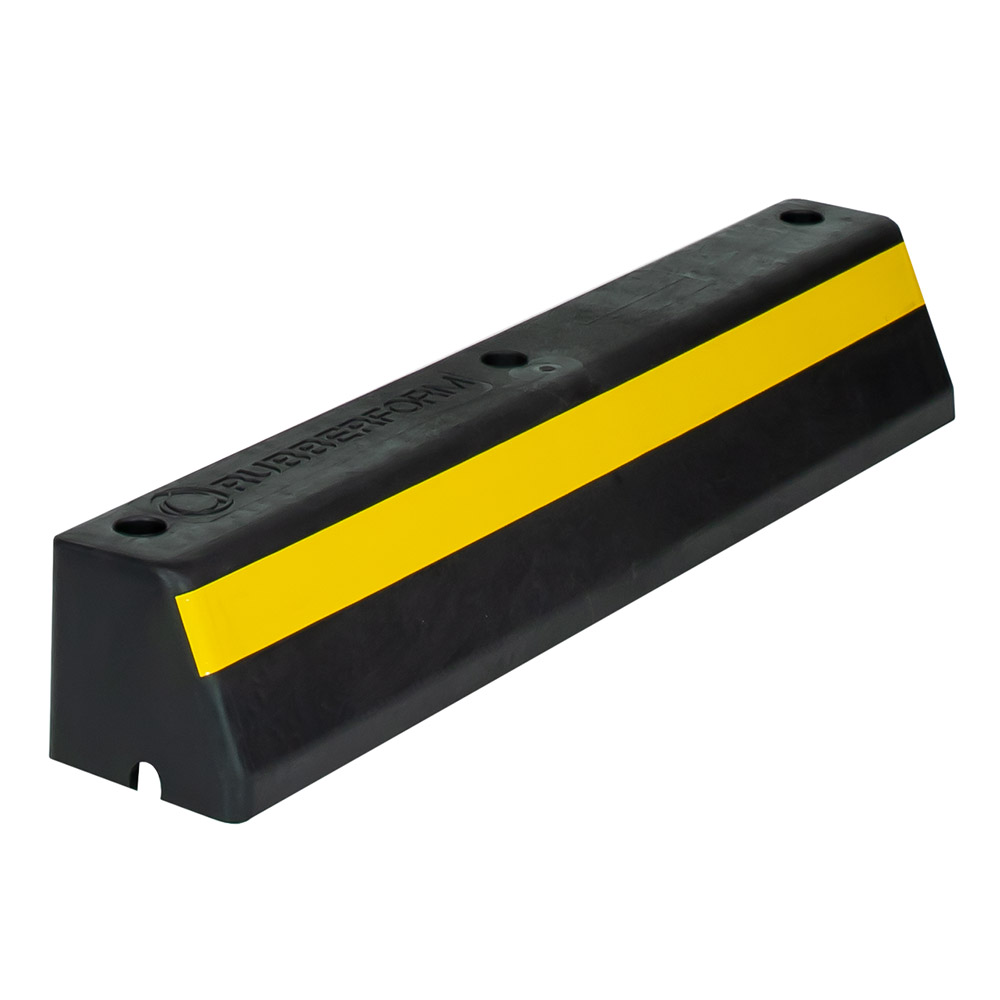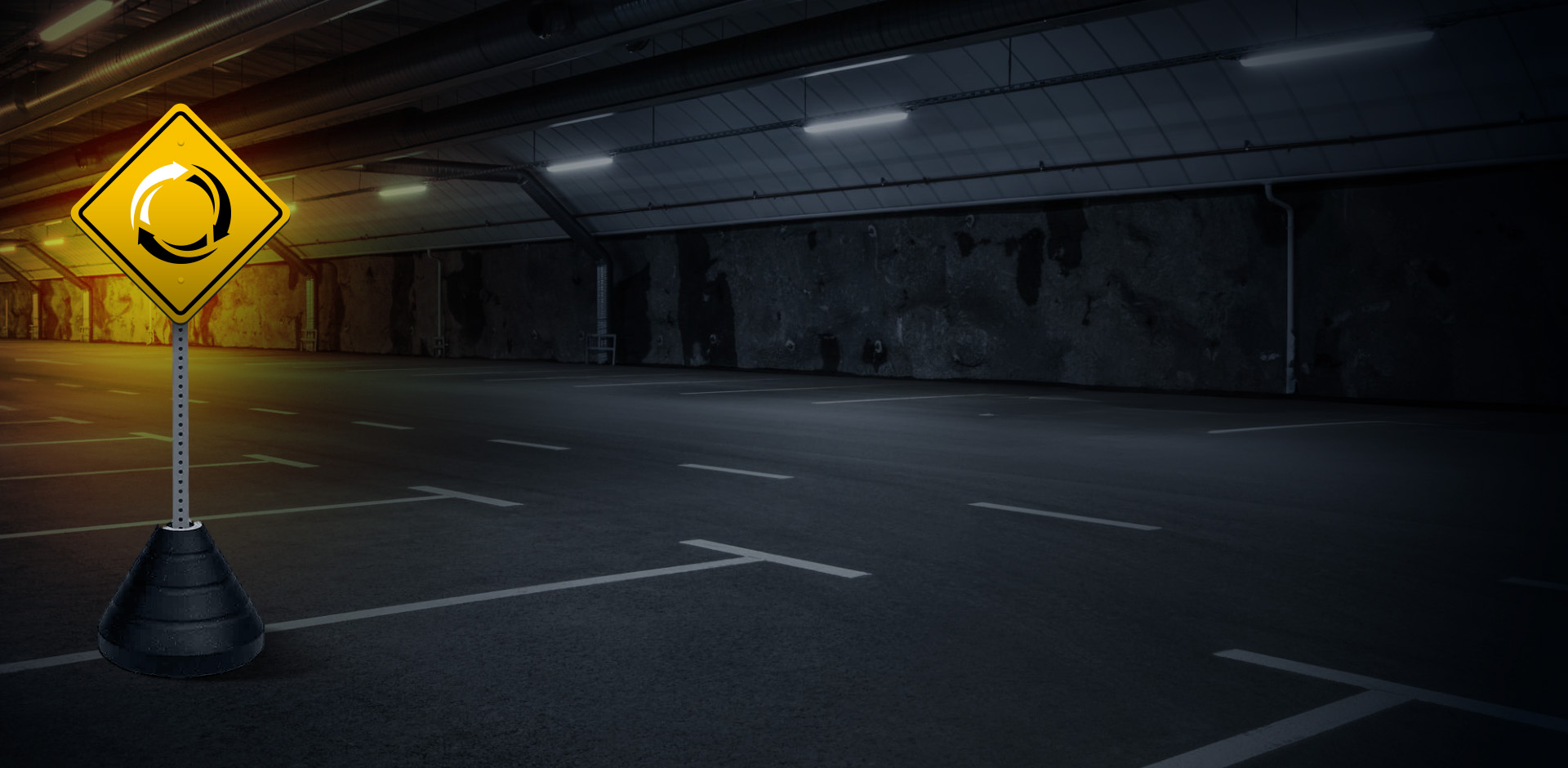- Construction
Trackout Control Mats
Product Description
RubberForm’s International Patented Trackout Control Mats remove sediment, mud, and dirt off heavy equipment exiting the job site. Traditional stone Stabilized Construction Exits & Entrances take significant time to install, require constant maintenance, and leave a mess behind to clean up later.
RubberForm’s Trackout Control Mats install and remove in just minutes, are easy to maintain, clean-out and repair if needed, and can be arranged to easily fit any size or grade of entrance or exit. You can fold them up for reuse again and again across multiple job sites. No calling 811, no digging, no filtering, no anchors, no special shovels for cleaning, no brackets required.
Specifications:
- RubberForm can custom design to fit your job site needs (See Product Models below)
- Installs in minutes – no anchors or brackets needed
- Quick & Easy maintenance. Simply lift the Trackout Mat up & lay back down
- No need to dig or anchor means no wasting time calling 811
- Conforms to any surface on the jobsite
- Reusable – folds up for easy transportation & storage
- Made in the USA with 100% compounded, composite recycled materials – complies with ARRA 2009 and Buy America Acts
- Replacement blocks & cables are available so your Trackout Mat will last for years
- Essential mat blocks warranty is 3 years
- Premier mat blocks warranty is 7 years
Product Description
Municipal regulations require job sites to minimize the carrying out, tracking of dirt, rock and other debris by vehicles exiting construction sites onto roadways. Failure to properly manage a construction exit may lead to fines, job delays, and potential lawsuits..
RubberForm Trackout Control Mats are the most reliable, durable, and reusable method of replacing a traditional stone stabilized construction entrance or exit. They’re refreshingly easy to install: no calling 811, no digging, no filtering, no anchors, no brackets required.
Unlike competing virgin plastic products, our 100% American recycled material Trackout Control Mats are not compromised by the extremes of North American weather: they can withstand heat, cold, rain, ice, and snow without failing. They won’t warp or corrode. They rarely chip or crack. And if any block or cable does warrant replacing it over years of use, unlike the competitive yellow mats, our Trackout Mats are modular and fully repairable with replacement parts.
Regulations
DEFINITION AND PURPOSE
A stabilized construction entrance is a temporary control practice defined by a point of entrance/exit to a construction site that is stabilized to reduce the tracking and carrying out of mud and dirt onto public roads by construction vehicles.
APPROPRIATE APPLICATIONS
- Use at construction sites:
- Where dirt or mud can be tracked onto public roadways
- Adjacent to water bodies
- Where poor soils are encountered
- Where dust is a problem during dry weather conditions
- This BMP may be implemented on a project-by-project basis in addition to other BMPs when determined necessary and feasible by the Resident Engineer (RE)
- Crushed aggregate greater than 75 mm (3 inches) and smaller than 150 mm (6 inches) shall be used
LIMITATIONS
- Site conditions, regional requirements, site specifications will dictate design and need.
STANDARDS AND SPECIFICATIONS –
- Limit the points of entrance/exit to the construction site
- Limit speed of vehicles to control dust
- Properly grade each construction entrance/exit to prevent runoff from leaving the construction site
- Route runoff from stabilized entrances/exits through a sediment-trapping device before discharge
- Design stabilized entrance/exit to support the heaviest vehicles and equipment that will use it
- Select construction access stabilization (aggregate, asphaltic concrete, concrete) based on longevity, required performance, and site conditions
- The use of asphalt concrete (AC) grindings for stabilized construction access/roadway is not allowed
- Use of aggregate or constructed/manufactured steel plates with ribs for entrance/exit access is allowed with written approval from the RE
- If an aggregate is approved, place crushed aggregate over geotextile fabric to at least 300 mm (12 in) depth, or place aggregate to a depth recommended by the RE
- Crushed aggregate greater than 75 mm (3 inches) and smaller than 150 mm (6 inches) shall be used
- Designate combination or single purpose entrances and exits to the construction site
- Implement BMP SC-1 7, “Street Sweeping and Vacuuming” as needed and as required
- Require all employees, subcontractors, and suppliers to utilize the stabilized construction entrance and exit
- All exit locations intended to be used for more than a two-week period continuously and for a period of time shall have stabilized construction entrance/exit BMPs (TC-1 “Stabilized Construction Entrance/Exit” or TC-3 “Entrance/Outlet Tire Wash”)
MAINTENANCE AND INSPECTION
- Inspect routinely for damage and assess the effectiveness of the BMP. Repair it if access is clogged with sediment or as directed by the RE. Remove aggregate, separate, and dispose of sediment if construction entrance/exit is clogged with sediment or as directed by the RE.
- Keep all temporary roadway ditches clear.
- Inspect for damage and repair as needed.
Models
RubberForm can custom design to fit your job site needs:
RF-TOCM-07.16
- 7’W x 16’L
- Exact size: 87″W x 196″L
- 118 square feet
- 795 lbs
RF-TOCM-10.10
- 10’W x 10’L
- Exact size: 120″W x 129″L
- 108 square feet
- 730 lbs
RF-TOCM-10.14
- 10’W x 14’L
- Exact size: 120″W x 174″L
- 145 square feet
- 975 lbs
RF-TOCM-10.16
- 10’W x 16’L
- Exact size: 120″W x 196″L
- 163 square feet
- 1,100 lbs
RF-TOCM-12.10
- 12’W x 10’L
- Exact size: 144″W x 129″L
- 129 square feet
- 875 lbs
RF-TOCM-12.14
- 12’W x 14’L
- Exact size: 144″W x 174″L
- 174 square feet
- 1,200 lbs
RF-TOCM-12.16
- 12’W x 16’L
- Exact size: 144″W x 196″L
- 196 square feet
- 1,325 lbs
Solutions
WHAT IS THE TRACKOUT & CARRYOUT PROBLEM?
- Tracking out and carrying out dirt, mud, stone, or other debris tracked or carried out onto a paved public road by a vehicle leaving a construction site.
- Dirt, stone, and mud adhering to tires, the exterior, or undercarriage of a vehicle leaving a construction site that falls onto a paved public roadway.
- Traces of dirt, stone, or other bulk material that spill onto a paved public road from an improperly loaded haul vehicle leaving a construction site.
- Dirt, stone, and mud leaving an unpaved access road going onto a paved public roadway.
Sources of particulate matter (PM), a regulated air pollutant, are when the material deposited on the pavement is lifted back into the atmosphere – or “re-entrained”-by the tires of vehicles passing over the matter. A large portion of particulate matter in the metropolitan area is caused by vehicle re-entrainment. Trackout and carryout remaining on roads can also lead to water pollution in the form of suspended sediment when carried to bodies of water by stormwater runoff.
According to many county and municipal governmental agencies, track out control is required for excavation sites having a disturbed surface area from which material is hauled on or off-site. Be sure to contact your local governmental agency for your area’s exact requirement. It’s also worth noting that track out could also be a violation of your areas hauling and stormwater ordinances.
THE TRACKOUT & CARRYOUT CONTROL SOLUTION
Installing our Rubberform’s Trackout mats will prevent track out and carryout of particulate matter from dirt, mud, stone, or other debris onto paved public roadways. The simplest and quickest control technique is the installation of a manufactured Trackout control mat. This is a modular, customizable rumble mat that consists of a ground-level, hard yet flexible rubber and plastic mat that when driven over creates a rumble designed to remove PM from vehicles tires. RubberForm’s Trackout control mat systems are easy to deploy, clean, maintain, and can be stored and reused for years to come.
WHY RUBBERFORM’S TRACKOUT CONTROL MATS ARE BETTER THAN CURRENT STANDARDS
Gravel track out pads are most commonly used as stabilized exits on excavation and construction sites. These are less effective than our mats at RubberForm and the gravel track out pads are harder to keep clean and maintained. A typical layout is 20 feet wide by a minimum of 50 feet long — most are 100 feet long with a 30-foot width with number 2 coarse aggregate and are at least 6 inches deep over geotextile. They are more expensive over time and are hard to maintain. The Trackout mats by RubberForm are the best and most cost-effective long-term choice. They can be moved and reused over time, unlike gravel track out pads.
